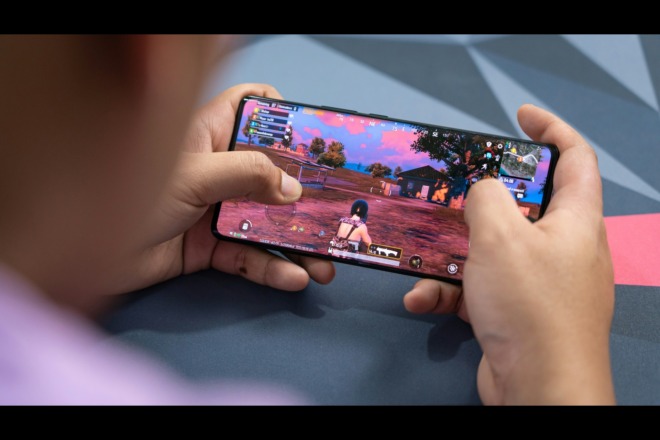The next chapter in our Small Business Marketing Guide takes a look at the power of word-of-mouth marketing and how you can tap into this highly effective but extremely inexpensive marketing method. Word-of-mouth marketing is exactly what it sounds like — a customer tells someone else about your business and they tell another person, and so on. However, you have to give them something they want to share. And there’s a bit more finesse to this than simply waiting for your fans to share your company with those they know.
Around 83 percent of people in the United States say that a word-of-mouth recommendation from someone they know makes them much more likely to do business with a company. Even if they don’t know the person making the recommendation, people are more likely to listen to a review from a real person than a pitch from a brand. Word-of-mouth marketing starts with excellent customer experience (CX) and morphs from there into a viral phenomenon that helps your business grow. Fortunately, there are some things you can do to help spur referrals along and increase your traffic from favorable mentions.
1. Ask for Referrals
The first step in increasing word-of-mouth marketing is simply asking your current customers, family, and friends if they will share your business with anyone who might be interested. There is a limit to how many people are in your inner circle, so you’ll want to use this in the beginning to get the ball rolling. Just put some other programs in place too to keep the chatter flowing.
2. Implement a Rewards Program
Newer customers may not feel comfortable recommending you if they’ve only done business with you a short while. However, if you reward them for mentioning your brand, then they are more likely to share with others. Think about some companies who did this in the early days to get the interest flowing. PayPal is a good example. When they first started, they offered a monetary reward if you referred someone and they signed up for an account. Ebates (now called Rakuten) offers rewards periodically if you refer new customers to them.
3. Team Up With Influencers
If you want to expand the number of people you reach, you must make an impression on customers you normally wouldn’t have access to. One way of doing this is teaming up with social media influencers. Seek out influencers who have a similar audience to your target market. Develop a relationship with them and ask them if they’ll share information about your brand. This might look like you sponsoring them and them writing a post for their social media page or you sending them a free product to try out and them reviewing it for their own followers. About 17 percent of companies spend 50 percent or more of their budget on influencers, but more marketing departments are getting on board with this style of marketing. Influencer marketing is highly effective. Think about big campaigns you’ve seen take off, like the ill-fated Fyre Festival. Dozens of supermodels and celebrities shared about the upcoming music festival and got the buzz going. The festival itself was a disaster, but the marketing was genius.
4. Invite Customer Reviews
Add a section on your website where customers can review your products or services. Encourage honest reviews and reach out to any customers who are unhappy (but do so publicly to show you’re committed to resolving issues). If someone lands on your website and feels a bit uncertain about whether they want to invest in your product, a review might be the extra push they need to go ahead and order.
5. Run Contests
Want to reach new people and gain shares? Run a contest via social media. Give away something your target demographic would want, but relate it back to your business model. For example, if you sell makeup, you might offer a contest for a free makeover from a celebrity stylist. Sure, some people will enter the contest merely for a chance to win a prize, but others may be truly interested in what you have to offer.
6. Go Interactive
Think about ways you can make the customer experience with your product more interactive. One example of a company running this type of word-of-mouth marketing campaign would be Tom’s Shoes. They encouraged their customers to post images on social media wearing the shoes in unique locations and to add a specific hashtag. Give customers who follow your lead a shout-out. Come up with a hashtag that works with your business and that’s easy to search and find on your end. You’ll reach all of your followers’ friends and get some free PR for your products.
7. Host an Event
Either host an event or tie into a big event in your industry. Offer a play-by-play description via social media so people can experience the event even if they aren’t able to travel. Think about unique ways to show them what’s going on, such as a daily video blog about speakers or special events. Share posts of the food served at included meals. Tell your followers what you’ve learned at the event and use hashtags meant to attract new followers. You could even host a Twitter Chat during one of the big moments of the event, such as during the awards ceremony.
Go for the Slow Build
Every business owner wants to put up that viral piece of content that draws thousands of shares and dozens of new customers. But finding the magical element that results in a viral moment isn’t easy. Instead, focus on the slow build. Seek out a few new customers at a time. With consistent effort and by tapping into what your base really wants, you’ll eventually hit on something that goes viral. In the meantime, you’ll slowly build your business and see steady growth through referrals.
CHAPTER 11: Guerrilla Marketing CHAPTER 13: Target Marketing
The Small Business Marketing Guide: Introduction
Chapter 1: Successful Viral Marketing Campaigns
Chapter 2: Influencer Marketing
Chapter 3: Conversational Marketing
Chapter 4: CMS Marketing
Chapter 5: Brand Marketing
Chapter 6: Scarcity Marketing
Chapter 7: Transactional Marketing
Chapter 8: FOMO Marketing
Chapter 9: Neuromarketing
Chapter 10: Close Range Marketing
Chapter 11: Guerrilla Marketing
Chapter 12: Word-of-Mouth Marketing
Chapter 13: Target Marketing
Chapter 14: Diversity Marketing
Chapter 15: Undercover Marketing
Chapter 16: Cause Marketing
About The Author
Eleanor Hecks is the Editor-in-Chief of Designerly Magazine, an online publication dedicated to providing in-depth content from the design and marketing industries. When she's not designing or writing code, you can find her exploring the outdoors with her husband and dog in their RV, burning calories at a local Zumba class, or curled up with a good book with her cats Gem and Cali.
You can find more of Eleanor's work at www.eleanorhecks.com.


